One of the enduring tragedies of the Genesis 32X is the long list of games that were announced for it but never arrived. Over the past fifteen years, fans have looked at those games and wondered just how far along they were when the plug was pulled and Sega turned all its attention to the fledgling Saturn. Since 1995, information has surfaced regarding a mere handful of these games, and most are still hidden in the shadows, leaving Genesis fans to wonder just what else is out there.
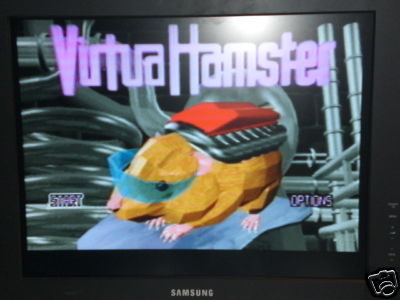 Perhaps the most well-known of the unreleased 32X games, if not the most discussed, is Sega’s own Virtua Hamster. An action/puzzle title that conjured up memories of Atari’s classic S.T.U.N. Runner, it featured a cast of tiny rodents exploring tube mazes and generated a lot of buzz when it debuted via Cinepak video at the 1995 summer Consumer Electronics Show (CES). However, it was mysteriously canceled by Sega shortly thereafter. As with many of the games announced, Virtua Hamster was quietly shelved when Sega discontinued its 16-bit line of hardware in 1995. Since then, only a few, poor quality screen shots and a mock-up of the packaging have been available. The buzz never died down, and gamers have long wondered how the game looked in motion.
Perhaps the most well-known of the unreleased 32X games, if not the most discussed, is Sega’s own Virtua Hamster. An action/puzzle title that conjured up memories of Atari’s classic S.T.U.N. Runner, it featured a cast of tiny rodents exploring tube mazes and generated a lot of buzz when it debuted via Cinepak video at the 1995 summer Consumer Electronics Show (CES). However, it was mysteriously canceled by Sega shortly thereafter. As with many of the games announced, Virtua Hamster was quietly shelved when Sega discontinued its 16-bit line of hardware in 1995. Since then, only a few, poor quality screen shots and a mock-up of the packaging have been available. The buzz never died down, and gamers have long wondered how the game looked in motion.
This question was finally answered in August 2009, when the fan site Sega Saturno managed to acquire and dump the ROM of the pre-alpha build. Finally, it was possible to see what had been done by the time the 32X was put out to pasture, and we were able to get a better idea of what we were missing. Never content with having only part of the story, Sega-16 went straight to the source, the people behind the game itself: designer & producer Eric Quakenbush, concept artist Matt Crane, and project director David Palmer to get the whole story behind this unique and intriguing title.
Chip’s Tale
The story behind this intriguing title is one that conjures up visions of rocket-powered rodents zipping through plastic tubes at incredible speeds, weapons blasting. There are actually several characters in the game, and each has its own back story and armament. Considering how little has actually been told about Virtua Hamster’s storyline, Sega-16 was quite surprised to see just how complete it actually was. Eric Quakenbush was happy to share the tale behind his project, and it’s obvious that a lot of work was put into giving the characters as much personality as possible. Much care was also given to explain and illustrate just how important our furry star and his weaponry are to the overall plot.
According to the design document, the pint-sized gadgets Chip the Hamster used were in great demand by the U.S. military, and since modern detection systems were geared towards human-sized targets, this new hamster-driven technology was highly coveted by other, less scrupulous figures. Shortly after an eccentric but good-natured toy inventor perfected his work, an evil scientist stole the prototype, as well as its blueprints and hamster pilot in order to create S.H.R.E.D. (Super High-speed RodEnt Delivery system). Though the villain had trained his own rodents to recover and return secret documents, the vehicles he designed for them to use were too complicated. The S.H.R.E.D. system, being much easier to control, was exactly what he needed.
Chip soon found himself in the scientist’s lair, surrounded by several unfriendly creatures that shunned him. There was an armadillo-like rodent from Brazil, a pack rat that hoarded power ups, and a sneaky mole named Maximillion. The only friend he had in his new environment was an older hamster, whose older jet pack model was considered to be the Model-T of its kind. The old timer gave Chip some vital information, telling him about all the features and flaws of the other animal’s equipment. Determined to recover the stolen blueprints and escape back to his kind master, he vowed to the old timer that he would navigate the treacherous tube mazes the evil scientist had created to test the equipment. Unfortunately, their conversation was overheard by the other rodents, and Chip now had to face both them and the maze itself if he ever wanted to stop the scientist and get home.
Click to see all the characters!
This is where the actual game itself began. When work actually began on the programming, a few changes were made. The blueprints were eliminated as objectives, and little robots called Skuttles were added. These would open doors for Chip and show the way to exits. Thus the focus of the gameplay shifted from finding the blueprints to simply exiting the maze safely, with the Skuttles being key to that goal. Along his journey, Chip had to avoid or overcome the other rodents, along with a mechanical snake that prowled the maze. To make things harder, our furry hero would be in grave danger should leave the tubes, as the scientist’s cat roamed the building, eager to snatch up any stray creature that dares to emerge onto the open floor.
Old Habitrails Are Hard to Break
According to Quakenbush, Virtua Hamster was his take on a classic genre, something different designed to attract gamers to Sega’s mushroom add-on. “I was asked to come up with a puzzle game for the 32X,” he explained to Sega-16, “and I could not come up with anything. I had hamsters as a kid, and I really liked the Habitrail cages with the tubes, and the idea of a race/fighting type game inside a Habitrail tube maze came to me. I pitched it as a puzzle/action game to shoehorn it into the puzzle category. I figured that the maze itself could be very puzzle-like if it were changeable by the player.” Sega basically gave him an open opportunity to create the game of his choice, as the new 32X upgrade was in need of original titles. Many of the titles Sega promoted for the 32X at the time were either upgraded version of multi-platform titles, such as Blackthorne, or ports of arcade titles, like T-MEK and Star Wars Arcade. Virtua Hamster offered Quakenbush the opportunity to show Sega what the little mushroom could do, and he jumped at the chance. “I was filling a 32X slot with a hamster,” he says. “I hadn’t designed or drawn anything related to the game before being asked for a puzzle game for the new platform.”
As Virtua Hamster was neither a port or an upgrade of an existing property, it would be designed to take advantage of the machine. Quakenbush was happy to finally be free of the aging 16-bit hardware and have some more horsepower with which to breathe life into his newest idea. He was eager to get to work and pitched the idea to Sega management. The design document he created in 1994 told the tale of a game that starred a hamster named Chip, a skateboard-riding, jet pack-wearing rodent who had the ability to infiltrate places humans couldn’t go. Illustrator Matt Crane did the pencil sketches of all the characters save for the Mechanical Snake (done by Quakenbush himself). Crane based his designs on inspiration from a favorite childhood book, as well as his love of animals. “When I was in third grade,” he revealed to Sega-16, “I had a favorite book that was called The Mouse and the Motorcycle by Beverly Cleary. This and a fascination for all critters made drawing the characters easy.” According to Crane, Sega management seemed excited about the game’s artistic direction. “As a contractor,” he explained, “I was part of a small in-house development group, and I was “lent out” to the producers only if I didn’t have any pressing deadlines. I do remember that the artwork was well received (framed and hung in the producers’ offices!), and I like to think it helped drive the project for a while anyway.”
Chip the Hamster wasn’t just a figment of someone’s imagination either. He was based on a real rodent owned by project director David Palmer’s girlfriend. “Once we started on the project with Eric as Sega producer,” Palmer shared, “I went out and to the pet store and got the team a real hamster, called Chip of course. He was used as reference for all our art. As I was in California most of the time, Chip lived with my girlfriend Liz in our UK apartment the rest of time.” The artwork included below has never been published before, and it shows just how much Chip evolved over the course of Virtua Hamster’s development.
Click for larger images!
For the gameplay itself, Eric Quakenbush came up with an engine that played out from a first person perspective. This was to simulate Chip’s helmet-mounted HUD display. Whenever he left the maze, be it from jumping from tube to tube or while wandering on the open floor, the game shifted to a third-person view. Using polygons similar to that of two other 32X Virtua titles, Virtua Fighter and Virtua Racing, the game was to be one that would show off the machine’s capabilities. Quakenbush had high hopes for it, seeking to take advantage of the fact that it was an original game. Virtua Hamster would have been one of the few 32X games to not have been scaled down during development due to the limitations of the console it was on. Not only was Quakenbush able to incorporate all his ideas without compromise, he also had the liberty to add and change things around without concern for things like memory space or processing speed.
When compared to other games on the machine, this is a major feat. Other 3D titles released by Sega on the 32X suffered from reduced polygon counts or had levels or characters removed. Virtua Hamster had no such problems. Moreover, he believed in the potential of the add-on and lamented that more wasn’t done with it. “We designed to the 32X’s strengths and limitations from the start,” he told us, “so it wasn’t a problem. It did more than the Genesis, so I was happy to design for it. I just wish it had a longer life.”
Unfortunately, Sega of Japan wasn’t too keen on the use of the “Virtua” moniker. Perhaps it was because all the games with the title came from Japan, or it may have had something to do with all the internal strife affecting the two divisions of the company, but one thing was clear: SOJ didn’t want the name to be used. Quakenbush commented on the problem during our conversations. “They sent word that they weren’t going to let that happen, but I wasn’t in on the discussion that led up to that so I can’t say why. All the other Virtua games came from Sega of Japan, and since they owned Sega of America they sure could stop an internal title from using it if they wanted to. I thought it was apt since it was all built from polygons, and it would have been funny as hell to see on the shelf.”
Quakenbush himself doesn’t know why there was a problem with the use of the name, as SOA management never told him. “I don’t know if I heard it from Mike (Latham),” he says, “or we both heard it at a product development meeting from one of the VPs. We may have heard that tidbit after the game was killed, so we didn’t follow up on it.” It’s unclear what the reasoning was or whether or not Sega had other names under consideration.
Armed to the Buck Teeth
Each of the creatures inside the tube maze was equipped with a jet pack that could not be turned off, though the pilot was able to divert power to brakes or weapons. The skateboard themselves were to be piloted by leaning into the turns. The skateboard provided no traction, which meant that being hit at an intersection would make it spin wildly out of control.
To complete his task, Chip was equipped with an ever-running jet pack and his trusty skateboard. There were also several power ups that could be obtained throughout the maze, all of which were designed to eliminate pursuers. To get the other hamsters off his stubby little tail, Chip could fight with his feet while riding, and he could also employ such weapons as bubble gum, which would obstruct the tube behind him and explode on impact, causing the enemy hamster to bounce off it back the way it came. Other power ups include bouncing pieces of popcorn, glue that sticks to the skateboard and hurls its rider off, and a Pixie Stick that provides limited invincibility. All of these power ups were stored in his cheek pouches by pressing the A button when they were found.
Chip’s foes were not without attacks of their own. For example, Sherman the Armadillo could use his large body size and strong armor to ram Chip, Outback the Kangaroo Rat could stun the player with a kick from his powerful hind legs, and Gizzard the Desert Rat was quick and agile, often sneaking up on players. All had rocket-powered skateboards and could use the same power ups as Chip. Moreover, the Mechanical Snake was always prowling for a meal. It would eat any rodents it encountered, gradually becoming slower and less agile with each one. Though unable to turn around in the tubes, the snake would find a way behind Chip if the hamster remained behind him too long. The best way to dispatch him was to trick him into falling onto the room floor, where the scientist’s cat would pounce him for a while, giving Chip precious time to make a getaway.
As if this weren’t enough, the tube maze itself presented challenges galore. Filled with turns, twists, and intersections, portions of it were also open, forcing the player to make tube-to-tube jumps in order to continue. Should Chip not have enough speed to make the jump, he would find himself on the floor and at the mercy of the cat unless he could scurry to an opening quick enough. In two-player mode, it was possible for two rodents to get stuck in at the maze’s exit, since the tube narrows as the opening gets closer. Quakenbush called this a “wedgey.” The Virtua Hamster design document explained the concept in full:
When a tube narrows sharply at either end, it can cause rodents to wedge together if they are exactly even with each other when they reach the exit. A player can escape a Wedgey by braking, if neither player is willing to break the stale-mate (and fall behind) they will have to deal with the consequences of an Inescapable Wedgey. An inescapable wedgey causes a random penalty to strike one of the characters such as the snake eating one of the characters (Death Wedgey) or the ever running rockets melting the tube and dropping one (or both) characters out of the maze (Wedgey Meltdown.)
The two-player mode sounds like it would have been a blast to play, and the competitive mode would have made Virtua Hamster a good title to go to for multi-player action. The pre-alpha build that was released to the public recently seems to be an earlier version than the one shown in images on Quakenbush’s site for the game. In those screens, there is actual two-player gameplay, and Chip has a power up (a sunflower seed) ready for use.
Still Some Gas Left in the Jet Pack
Quakenbush has stated that he wouldn’t mind revisiting the concept, possibly for mobile phones. He’s been asked about resurrecting the famous hamster many times since 1995. “I have had that idea recommended from a few folks,” he says, “the accelerometer on the iPhone would be fun to use in a game like this. I would probably be sued by Disney for being too similar to G-Force at this point!” True and unfortunate, since Virtua Hamster predates Disney’s rodent adventure by more than a decade!
Even if Virtua Hamster were to make a modern comeback, it wouldn’t be at the hands of Sega, since the company no longer owns the franchise. After the cancellation, it was transferred in 1995 to Games Producer Ltd., a company owned by David Palmer. Palmer was owed a large sum of money after the game was shelved (he reportedly lost around $180 thousand of his own money), and the total transfer of rights was a part of his compensation. “My company [was] employed to design and develop the game on 32X and then to Saturn. The game was canned by Sega at 99% complete,” he told the site Unseen64. “As part of a legal settlement with my company, the entire intellectual property of this game and code, which we designed and developed, was signed over to me in its entirety.”
It’s interesting to know that a the 32X version was so near completion when it discontinued, much farther along than previously thought. Palmer also mentioned in his comments that the game had been moved to the Saturn after the 32X version was cancelled, though he didn’t indicate how much had been done. If true, this would mark the first time any mention of the game coming to the Saturn has surfaced. No advertising was ever released about a possible Virtua Hamster for Sega’s 32-bit machine, and nothing has surfaced about it since the console was put to rest in 1998. However, this doesn’t mean nothing was ever done. Some games in development are never publicized, just as some are announced and never see the light of day (Eternal Champions for Saturn comes to mind).
Even so, it’s always good to know for sure. We specifically asked Eric Quakenbush about the why the game wasn’t released for the Saturn when the 32X was discontinued. “The execs knew that the 32X was a stop-gap to make the Genesis last a bit longer,” he said, “and once they saw how small the window was to get games out before the Saturn came along they killed anything that was going to take too long to finish. I think all the Saturn launch titles were such a different flavor that it was never in the running to take a Saturn slot.” Quakenbush believes that Sega most likely only wanted the game in its original incarnation. One thing is clear in his mind though: Sega was done with the game when the 32X died. “The 32X platform both drove the need for the game and was the reason it got killed.”
Could it be possible that there is an almost complete version of Virtua Hamster for the Saturn out there somewhere, waiting to be found? If so, why have no details about it ever come to light before? Perhaps an even better question is why Sega would cancel a game that was so close to being finished. If the 32X version was indeed 99% complete, and work on the Saturn port was underway, why not see it through? The Saturn was in dire need of software after its surprise American launch, and Virtua Hamster would have been a prime candidate to beef up the library. Considering that early Saturn adopters had to wait months for another game after launch (and what we got was Bug!), it doesn’t make sense to keep Virtua Hamster off the shelf.
It’s taken the better part of twenty years for the 32X ROM to finally be dumped, so how long will we have to wait to see what a nearly finished Virtua Hamster would be like? Perhaps not as long as we thought. Beyond these two incomplete versions, Palmer mentioned to us that Virtua Hamster may still show up again one day, though he didn’t specify in what format. “We still have all the source,” he explained, “all the work up art and graphics, as well as the digital art. It has always been our intention to use this IP and some work has been progressed on the project recently. Watch our web site.”
So there may be some hope for rocket-powered rodents after all!
Still, it’s nice to finally be able to play the game in some form, no matter how incomplete it is. Quakenbush himself recognizes just how early a version it is, and he commented to us about how fans shouldn’t be quick to judge the game based on the dumped ROM. “The production build that got out recently didn’t have the collision detection, weapons, or attacks in it, and it was very boring. I wish we had at least gotten to a solid Alpha build before being killed.” This is something fans should consider when trying the ROM, considering it doesn’t include features seen in screens available on Quakenbush’s site. This also lends credence to David Palmer’s contention of Virtua Hamster being more complete than what we’ve seen. Obviously, this ROM is not the final build of the game that was eventually canceled.
Sega-16 is sure that there are many gamers out there who would like to see Quakenbush’s original vision reach fruition, and it all depends on David Palmer and Gameproducer.com. Virtua Hamster would make an excellent downloadable title for Xbox Live Arcade, the Playstation Network, or WiiWare, as the unique mixture of action and puzzle elements would appeal to many people. An HD facelift wouldn’t hurt either! We’ll be keeping tabs on this project and will be there if and when the game finally surfaces. Until then, try the alpha, head over to Eric Quakenbush’s page on the game, and imagine just how cool turbo rodents could really be.
Sources
- Crane, Matt, Email to Ken Horowitz. September 25, 2009.
- MattG. Lost Virtua Hamster Races Back. Press the Buttons. July 28, 2009.
- Palmer, David. “Questions on Virtua Hamster.” Email to Ken Horowitz. September 6. 2009.
- —————-. “Questions on Virtua Hamster Follow Up.” Email to Ken Horowitz. October 20, 2009.
- Quakenbush, Eric. Virtua Hamster Game Design Examples. Quakenbush Design. 2009.
- —————-. “Virtua Hamster Questions.” Email to Ken Horowitz. August 19, 2009.
- —————-. “Virtua Hamster Questions Follow Up.” Email to Ken Horowitz. September 1, 2009.
- Unseen64 Staff. Virtua Hamster [32X Unreleased]. Unseen64. April 7, 2008.

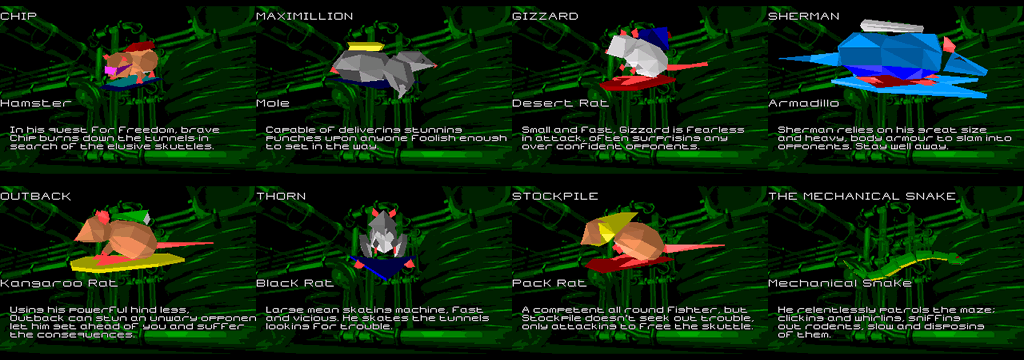
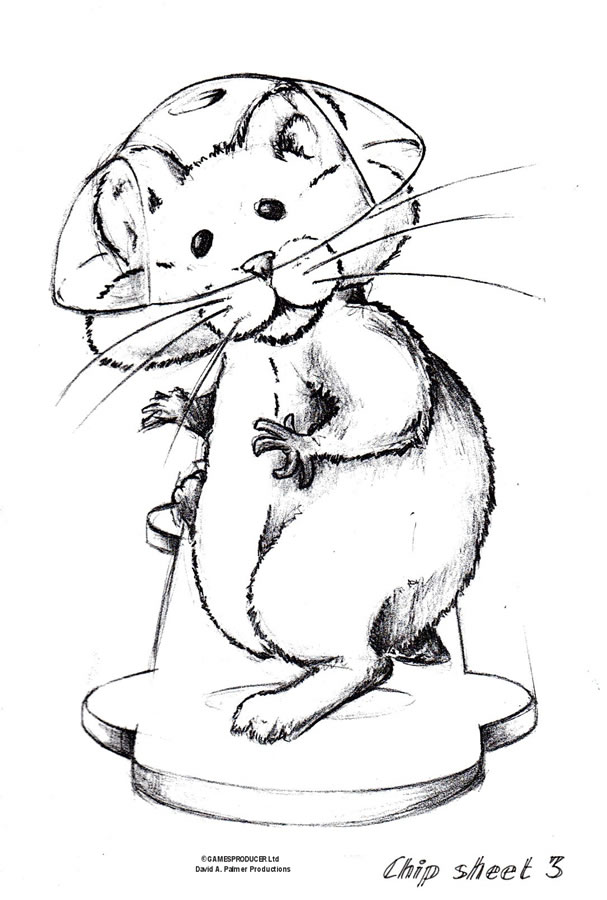
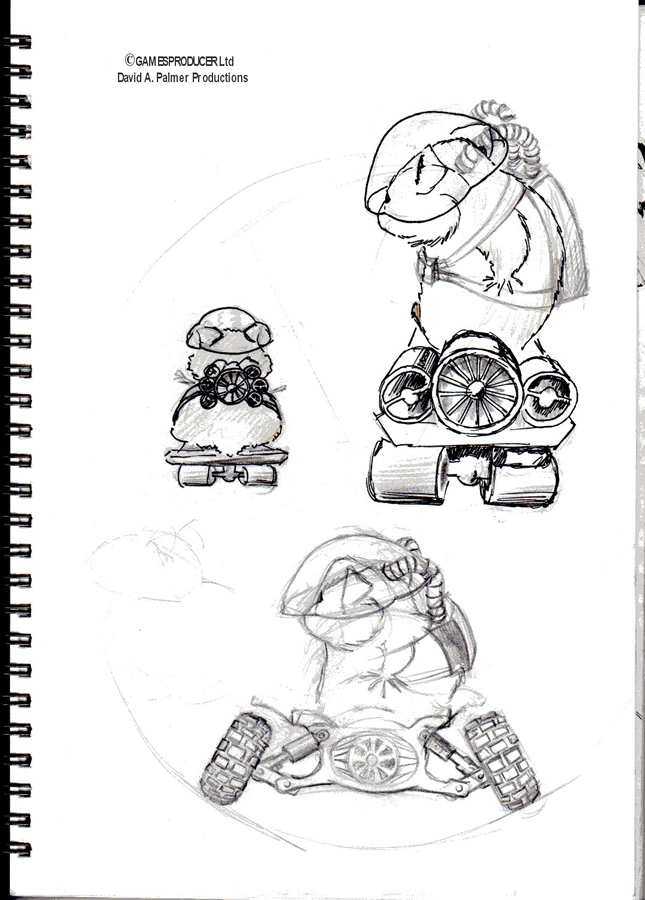
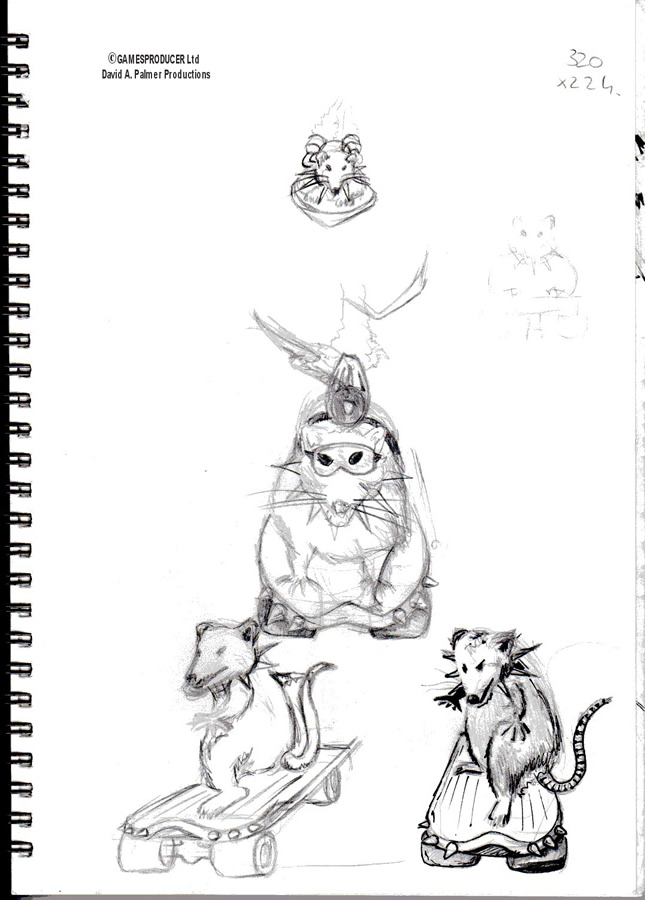

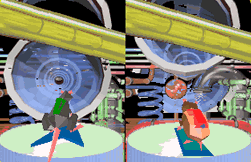
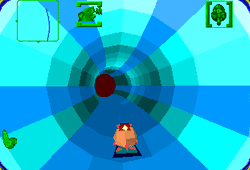
Recent Comments